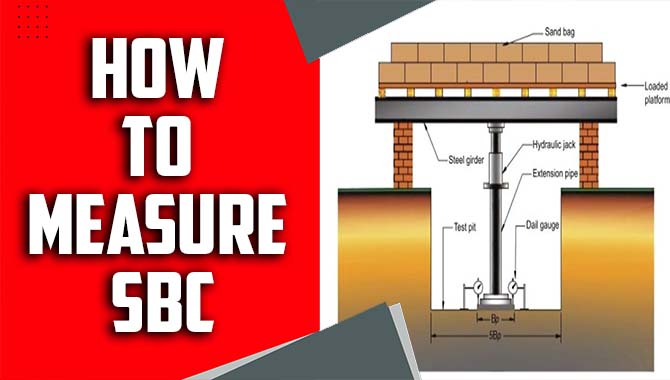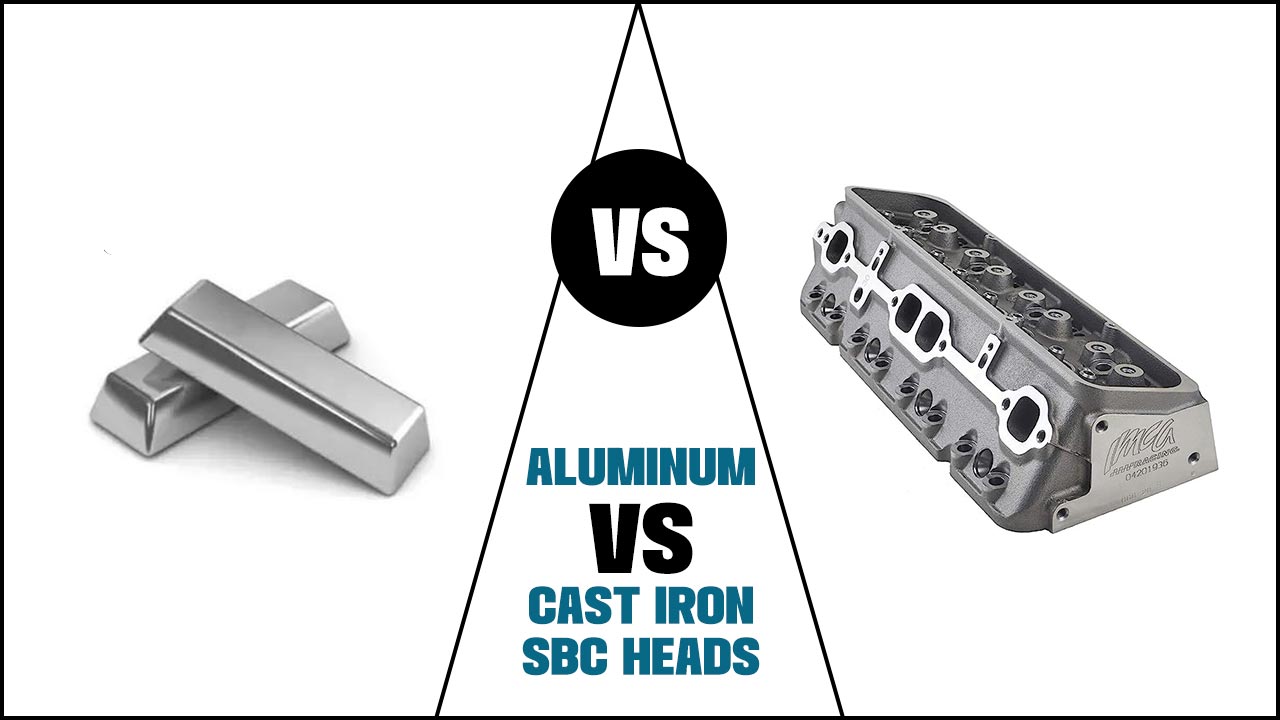How to port SBC heads is a great way to improve its performance and efficiency. However, many enthusiasts are intimidated by the task of porting heads and may not know where to start.
This blog post will provide a step-by-step guide on porting SBC heads. Whether you are a seasoned mechanic or a beginner, this post will give you a clear understanding of the process and the tools you need to get started.
Porting the cylinder heads on your engine involves removing material from the intake and exhaust ports to increase airflow. This can result in increased horsepower, torque, and overall engine performance.
However, it is important to note that porting heads is not for everyone and should only be done by those with the proper knowledge, experience, and equipment. This post will cover the steps for porting SBC heads, including preparation, cutting, sanding, and polishing.

What Is A Cylinder Head Porting Kit?
A cylinder head porting kit is a set of tools designed to help improve an engine’s performance by increasing the flow of air and fuel into the combustion chamber. The typically includes various grinding and polishing tools and different types of abrasive compounds that use to smooth out the rough surfaces inside the cylinder head.
With the use of a porting kit, it’s possible to reshape the intake and exhaust ports to create a smoother, more efficient flow of air and fuel, which can result in improved horsepower, torque, and overall engine performance.
However, it’s important to note that porting should only be done by experienced professionals or those with a deep understanding of engine mechanics, as improper porting can lead to serious engine damage or failure.
What I Need
If you’re looking to boost the performance of your engine, porting your SBC heads is a great place to start. Porting involves removing metal from the intake and exhaust ports to increase airflow and, thus, horsepower. The process is done by hand or with a CNC machine, but either way, it requires some specialized knowledge and tools.
First, you’ll need to carefully remove the heads from your engine and inspect them for cracks or other damage. Then, you’ll need to measure the ports and decide how much material to remove.
It’s a delicate process that requires patience and precision, as removing too much material can actually hurt performance. Once you’ve removed the material, must smooth out the edges and polish the ports to reduce turbulence and improve flow.
How To Port SBC Heads – Step By Step
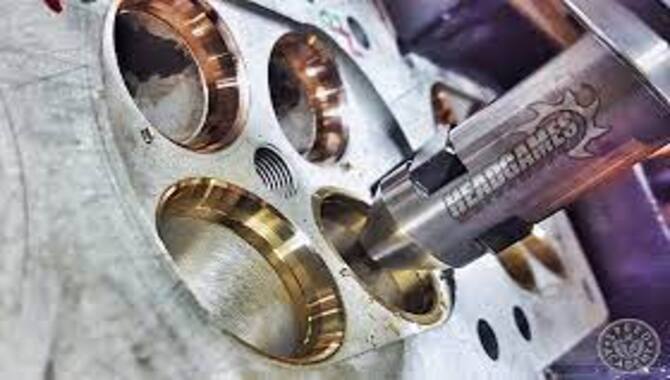
Porting a cylinder can be daunting, but with the right tools and technique, we are giving you How to port SBC heads step by step. One of the most popular ways to improve the performance of your engine is to port the cylinder heads.
This process involves removing material from the intake and exhaust ports to increase airflow, improving power and torque. If you have a Small Block Chevy (SBC), you may wonder how to port SBC heads step by step. Here a basic guide to help you get start.
First, you must remove the cylinder heads from the engine and clean them thoroughly. Next, you must mark the intake and exhaust ports with dye or paint to help you keep track of where you have removed material.
You will then need a die grinder or rotary tool with a carbide burr to remove material from the ports carefully. Be sure to remove material evenly and avoid going too deep, as this can cause damage to the heads.
Tools Of The Trade
Regarding the tools of the trade in the world of hot rodding and engine building. Few things are more important than a good set of cylinder heads. And when it comes to getting the most out of your small block Chevy engine, porting the is often necessary.
But how exactly do you go about porting SBC heads? Well, it all starts with having the right tools. A good set of carbide burrs, a die grinder, a rotary file, and a porting kit are all essential items.
Of course, you’ll also need basic safety gear, such as eye and ear protection, gloves, and a respirator. Once you have your tools in hand, it’s time to get to work. The first step is to carefully remove any casting flash or other irregularities from the intake and exhaust ports. Then, using your carbide burrs and rotary file, you can begin to shape and enlarge the ports to improve airflow
Including Preparation For How To Port SBC Heads
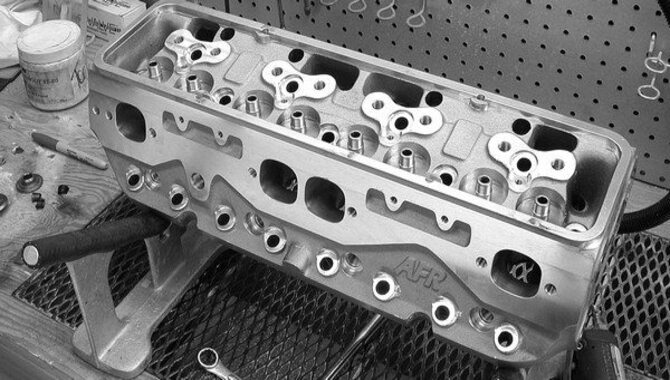
Porting SBC heads is an essential modification for those looking to optimize the performance of their small-block Chevy engine. However, it is not a task that should take lightly. Proper preparation is key when it comes to porting heads.
This includes selecting the right tools and equipment for the job, such as a die grinder, sandpaper, and a porting kit. Having a clean work area and wearing protective gear, such as safety glasses and a dust mask, is also important.
Regarding how to port SBC heads, there are several techniques and approaches to consider. The first step is to assess the current condition of the heads and identify any areas that require improvement.
This may involve measuring the port size and shape and examining the valve seats and guides. From there, the porting process can begin, which may involve removing material from certain areas, smoothing out rough spots, and reshaping the ports to optimize flow.
How To Port SBC Heads For Cutting, Sanding, And Polishing
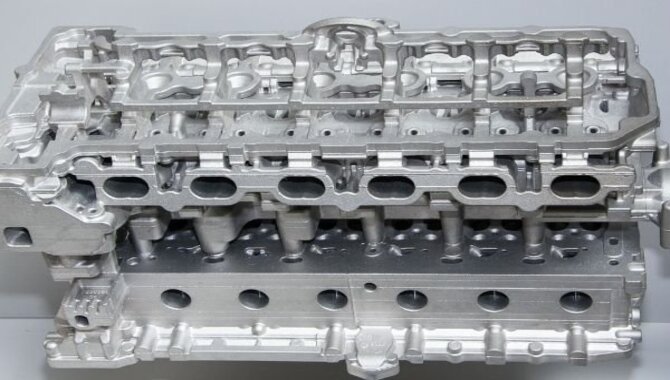
Regarding modifying engine heads, porting is one of the most effective ways to increase horsepower and performance. If you’re working with Small Block Chevy (SBC) heads, there are several steps you can take to port them for cutting, sanding, and polishing.
First, you’ll need to remove any existing material from the ports using a carbide burr or die grinder. This should be done carefully and gradually to ensure that you don’t remove too much material and compromise the structural integrity of the head.
Once the ports are opened up, you can use sanding rolls and polishing discs to smooth out rough spots and create a more streamlined flow path for air and fuel.
When sanding and polishing, it’s important to be patient and work in small increments to avoid damaging the head. You may also want to consider using a flow bench to test the effectiveness of your porting and make any necessary adjustments. With the right tools and techniques, you can significantly improve the flow.
Best Tools For Porting Cylinder Heads
When it comes to porting cylinder heads, having the right tools is crucial for achieving the best results. One of the best tools for porting cylinder heads is a die grinder. This versatile tool lets you easily remove material from the cylinder head, making it ideal for enlarging the ports or smoothing rough spots.
Another essential tool for porting cylinder heads is a carbide burr. These burrs are make from a hard. Durable material that is capable of removing metal quickly and efficiently. They come in various shapes and sizes, making them ideal for getting into tight spaces and creating intricate shapes.
In addition, to die grinders and carbide burrs, a good set of sanding rolls is also essential for porting cylinder heads. These rolls allow you to sand and polish the ports to a smooth finish, which is important for achieving maximum airflow. A set of valve seat cutters is also useful when porting cylinder heads.
Basic Porting Techniques For Chevy Small-Block Cylinder Heads
Basic Porting Techniques for Chevy Small-Block Cylinder Heads are essential to maximizing the engine’s performance. Porting is the process of reshaping and polishing the intake and exhaust ports of the cylinder head to improve airflow and increase power.
These techniques involve removing material from the rough castings and smoothing out the walls of the ports. The most common modifications include removing casting flash, enlarging the ports, shaping the bowls, and polishing the intake runners.
These techniques can improve the engine’s volumetric efficiency, allowing more air and fuel to enter the combustion chamber, resulting in more power and torque. Another important aspect of porting includes matching the intake manifold to the cylinder head ports for optimal airflow.
It is important to note that proper porting requires careful planning and precise execution, as any mistake can negatively affect performance. It is also important to ensure that you do not over-port the cylinder head, as this can lead to a loss of low-end torque.
How To Port And Polish Your Car Cylinder Heads
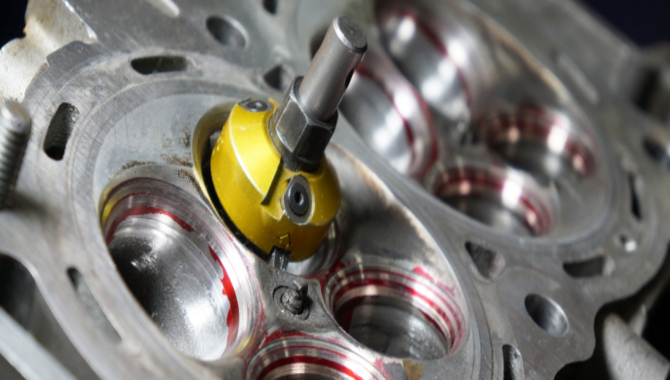
If you want to increase your car engine’s performance, porting and polishing your cylinder heads may be a great place to start. The process of porting involves removing material from the intake and exhaust ports of the cylinder head to increase airflow and improve combustion efficiency.
Conversely, polishing involves smoothing out any rough surfaces left behind from the porting process. This can create a smoother air and fuel mixture flow into the combustion chamber, resulting in improved power and torque. To begin the porting and polishing process, you’ll need to remove the cylinder heads from your engine and clean them thoroughly.
From there, you’ll need to carefully mark the areas that need to be removed and use various tools to remove the material, such as a die grinder or a carbide burr. Once the porting is complete, it’s time to begin polishing. This can be done using various abrasive materials, such as sandpaper or polishing wheels.
Conclusion:
How to port SBC heads is a daunting process, but with the right tools and techniques, it can greatly improve the efficiency of your engine. Maximizing the airflow through the cylinder heads can increase horsepower and torque, resulting in a more powerful engine.
It’s important to remember that porting should be done carefully and precisely, as mistakes can negatively impact performance. With patience and attention to detail, however, you can achieve significant gains in the performance of your engine.
FAQ:
1.What Are The Benefits Of Porting SBC Heads?
Ans: Porting removes material from the intake and exhaust passages, creating smoother, larger passages allowing more airflow through the engine. This can increase horsepower and torque.
2.What Equipment Is Needed For Porting SBC Heads?
Ans: Die grinder or rotary tool with carbide burrs and grinding stones. Abrasive rolls or sanding discs. Dial indicator and stand. Flow bench or airflow meter. Safety equipment, including eye and ear protection, gloves, and a respirator mask.
3.What Are Some Common Mistakes To Avoid When Porting SBC Heads?
Ans: Removing too much material from the intake and exhaust ports can reduce the velocity and hurt low-end torque. Not maintaining proper wall thickness can weaken the head and cause cracking.
4.What Are Some Tips For Optimizing Airflow And Achieving Maximum Power Gains When Porting SBC Heads?
Use a flow bench to measure airflow through the ports and identify areas of restriction. Smooth out the rough spots and edges in the ports, making them as smooth as possible. Use a multi-angle valve job to improve airflow around the valve.\
5.How Can You Determine Your Specific Engine Build’s Ideal Port Size And Shape?
Ans: Factors such as intake manifold design, camshaft profile, and cylinder head geometry all play a role in determining the optimal port size and shape. Engine builders often use flow bench testing and computer modelling software to analyze and optimize the airflow characteristics of the engine’s ports.




